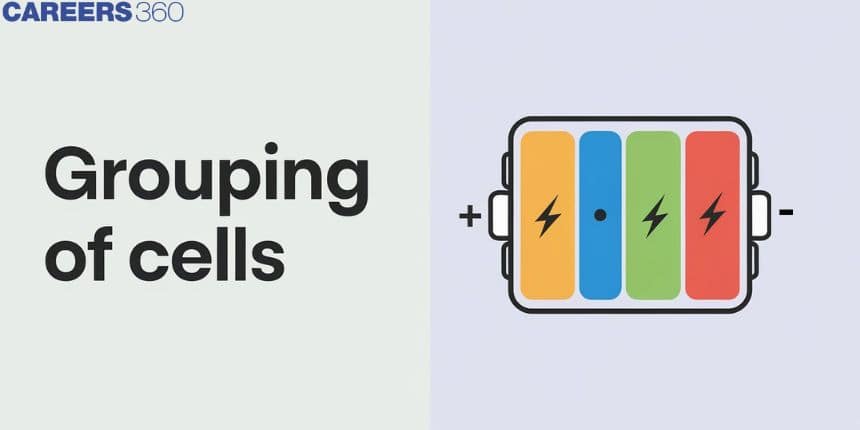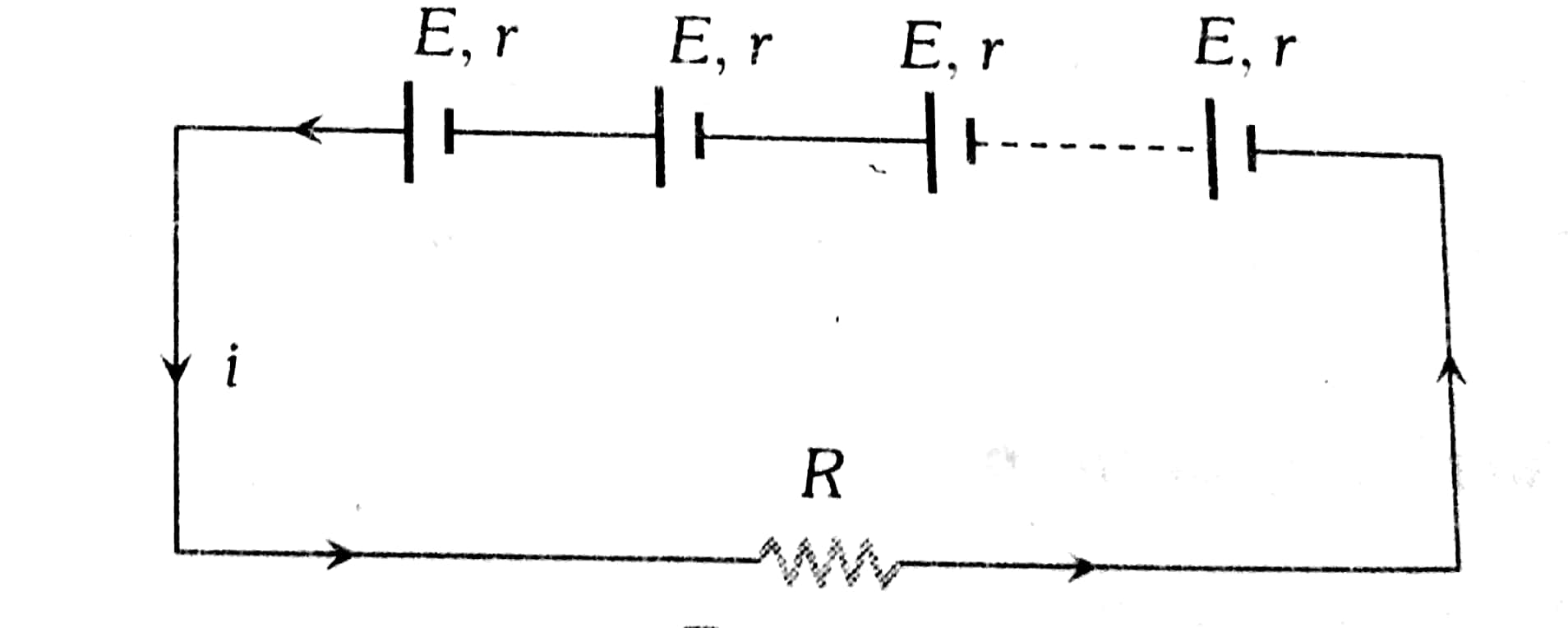Grouping Of Cells
In the world of current electricity, the concept of grouping cells plays a crucial role in enhancing the efficiency and functionality of electrical circuits. Just as teamwork amplifies the strength of individuals working together towards a common goal, grouping cells—whether in series or parallel—can significantly impact the overall voltage, current, and power output of a circuit. This is akin to how multiple batteries working together in a flashlight ensure a brighter and more reliable light. In real life, this principle is applied in devices like remote controls, electric vehicles, and even large-scale power systems, where cells are strategically grouped to optimize performance and longevity. Understanding how cells are grouped in circuits not only deepens our comprehension of electrical systems but also highlights the importance of collaboration and strategy in achieving optimal results.
This Story also Contains
- What is a Series Grouping of Cells?
- What is the Parallel Grouping of Cells?
- What is a Mixed Grouping of Cells?
- Solved Examples Based on Current Given by a Cell
- Example 1: In the circuit shown the magnitudes of the flow of current (in A) would be
- Hence, the answer is (10).
- Summary

What is a Series Grouping of Cells?
A series grouping of cells is a configuration where multiple cells or batteries are connected end-to-end, with the positive terminal of one cell connected to the negative terminal of the next. This arrangement results in the total voltage being the sum of the individual voltages of all the cells, while the current remains the same as that of a single cell.
In series grouping anode of one cell is connected to the cathode of other cells.

n = identical cells which are connected in series, then
Equivalent e.m.f of combination is $E_{e q}=n E$
Equivalent internal resistance $r_{e q}=n r$
Main current/current from each cell $i=\frac{n E}{R+n r}$
The power dissipated in the external circuit is $\left(\frac{n E}{R+n r}\right)^2 \cdot R$
The conditions for Maximum Power is $R=n r$
$P_{\max }=n\left(\frac{E^2}{4 r}\right)$ when $n r \ll R$
What is the Parallel Grouping of Cells?
Parallel grouping of cells is a configuration where multiple cells or batteries are connected with all the positive terminals connected together and all the negative terminals connected together. In this arrangement, the total voltage across the circuit remains the same as the voltage of a single cell, but the total current capacity is the sum of the currents provided by each individual cell.
In parallel grouping, all anodes are connected to one point and all cathodes together at other points.

For n cells connected in parallel
Equivalent e.m.f $E_{e q}=E$
Equivalent internal resistance $R_{e q}=\frac{r}{n}$
The main current is
$i=\frac{E}{R+\frac{r}{n}}$
The potential difference across the external resistance
$V=i R$
Current from each cell
$i^{\prime}=\frac{i}{n}$
The power dissipated in the circuit
$P=\left(\frac{E}{R+\frac{r}{n}}\right)^2 \cdot R$
Condition for Maximum Power
$\begin{aligned} & R=\frac{r}{n} \\ & P_{\max }=n\left(\frac{E^2}{4 r}\right)_{\text {when } r} \gg>n R\end{aligned}$
What is a Mixed Grouping of Cells?
A mixed grouping of cells, also known as a series-parallel combination, is a configuration that combines both series and parallel connections of cells to optimize the overall voltage and current capacity in an electrical circuit. In this setup, cells are first grouped in series to increase the voltage, and then these series groups are connected in parallel to increase the current capacity, or vice versa.
if n identical cells are connected in a row and such m rows are connected in parallel.

Equivalent e.m.f is $E_{e q}=n E$
Equivalent internal resistance $r_{e q}=\frac{n r}{m}$
The main current flowing through the load $i=\frac{n E}{R+\frac{n r}{m}}=\frac{m n E}{m R+n r}$
The potential difference across load $V=i R$
The potential difference across each cell $V^{\prime}=\frac{V}{n}$
Current from each cell $i^{\prime}=\frac{i}{m}$
Condition for Maximum Power $R=\frac{n r}{m}$
$P_{\max }=(m n) \frac{E^2}{4 r}$
$m n-$ the total number of cells.
Recommended Topic Video
Solved Examples Based on Current Given by a Cell
Example 1: In the circuit shown the magnitudes of the flow of current (in A) would be

1) 1
2) 2
3) 3
4) 4
Solution:
Series Grouping
In series grouping anode of one cell is connected to the cathode of another cell
wherein

$\begin{aligned} & \mathrm{EMF}=10 \mathrm{~V}-4 \mathrm{~V}=6 \mathrm{~V} \\ & R_{e q}=R+r_1+r_2=6 \Omega \\ & I=1 \cdot \frac{6 \mathrm{~V}}{6 \Omega}=1 \mathrm{~A}\end{aligned}$
Hence, the answer is option (1).
Example 2: 10 identical cells in series are connected to the ends of a resistance of $59 \Omega$, the current is found to be 0.25A. But when the same cells being connected in parallel, are joined to the ends of a resistance of $0.05 \Omega$, the current is 25A EMF (in V) of each cell is
1) 1.5
2) 0.5
3) 1
4) 2
Solution:
$
\begin{aligned}
& E_{e q}=n E \\
& \quad I=\frac{E_{e q}}{R+r_{e q}} \\
& \text { In series: } \\
& E_{e q}=10 E \text { and } r_{e q}=10 r, I=0.25 A \\
& \therefore 0.25=\frac{10 E}{59+10 r} \text { or } 10 E=2.5 r+14.75 \ldots(1)
\end{aligned}
$
In parallel: $E_{e q}=E$ and $r_{e q}=r / 10, I=25 A$
$
\therefore 25=\frac{E}{0.05+\frac{r}{10}} \text { or } E=1.25+2.5 r \ldots \ldots(2)
$
$
\begin{aligned}
& (1)-(2) \\
& 13.5=9 E \text { or } E=1.5 V
\end{aligned}
$
Hence, the answer is (1.5).
Example 3: In a battery 12 cells, each having the same EMF are connected in series and are kept in a closed box. Some of the cells are wrongly connected. This battery is connected in series with an ammeter and two cells identical to others. The current is 3A when the cells and battery aid each other and 2A when the cells and battery oppose each other. The number of cells wrongly connected in the battery are
1) 1
2) 2
3) 3
4) 4
Solution:
Main current/current from each cell
$i=\frac{n E}{R+n r}$
wherein
n - identical cells connected in series
Let n cells in the battery be wrongly connected.
Then $E_B=(12-n) E-n E=(12-2 n) E$
$r_B=12 r$
$\Rightarrow I=\frac{E_{e q}}{R+n r}=\frac{(12-2 n) E+2 E}{12 r+2 r}=3 A$
$\Rightarrow(14-2 n) E=42 r$.
$2 A=\frac{(12-2 n) E-2 E}{12 r+2 r}$ or $(10-2 n) E=28 r$. $\qquad$
$\Rightarrow \operatorname{Eqn}(1) / \operatorname{Eqn}(2)$
$\frac{14-2 n}{10-2 n}=\frac{3}{2}$ or $28-4 n=30-6 n$
$2 \mathrm{n}=2$ or $\mathrm{n}=1$.
Hence, the answer is (1).
Example 4: 12 identical cells each with emf 4V and internal resistance $1 \Omega$ are connected in series. The power dissipated (in W ) through an external resistance of $8 \Omega$ connected with this system is
1) 46
2) 42
3) 32
4) 54
Solution:
The power dissipated in the external circuit
$\left(\frac{n E}{R+n r}\right)^2 \cdot R$
Current through the external resistor is
$I=\frac{n E}{R+n r}=\frac{48}{8+12}=2.4 \mathrm{~A}$
The power dissipated in the external circuit
$=I^2 \cdot R=(2.4)^2 * 8=46 \mathrm{~W}$
Hence, the answer is (46).
Example 5: 10 identical cells each with emf 2V and internal resistance 1 are connected in series with an external resistor. The maximum power (in W ) dissipated through an external resistance is
1) 10
2) 5
3) 15
4) 20
Solution:
Condition for Maximum Power
$
\begin{aligned}
& R=n r \\
& P_{\max }=n\left(\frac{E^2}{4 r}\right)
\end{aligned}
$
wherein
when $n r<<R$
$
=10 * \frac{2^2}{4 * 1}=10 \mathrm{~W}
$
Hence, the answer is (10).
Summary
In current electricity, cells can be grouped in series, parallel, or a mixed configuration to optimize voltage, current, and power output. Series grouping increases voltage, while parallel grouping enhances current capacity. Mixed grouping combines both to achieve desired electrical properties. These principles are crucial for designing efficient circuits, as seen in practical applications like battery packs and power systems, where the correct configuration ensures maximum performance and energy efficiency.